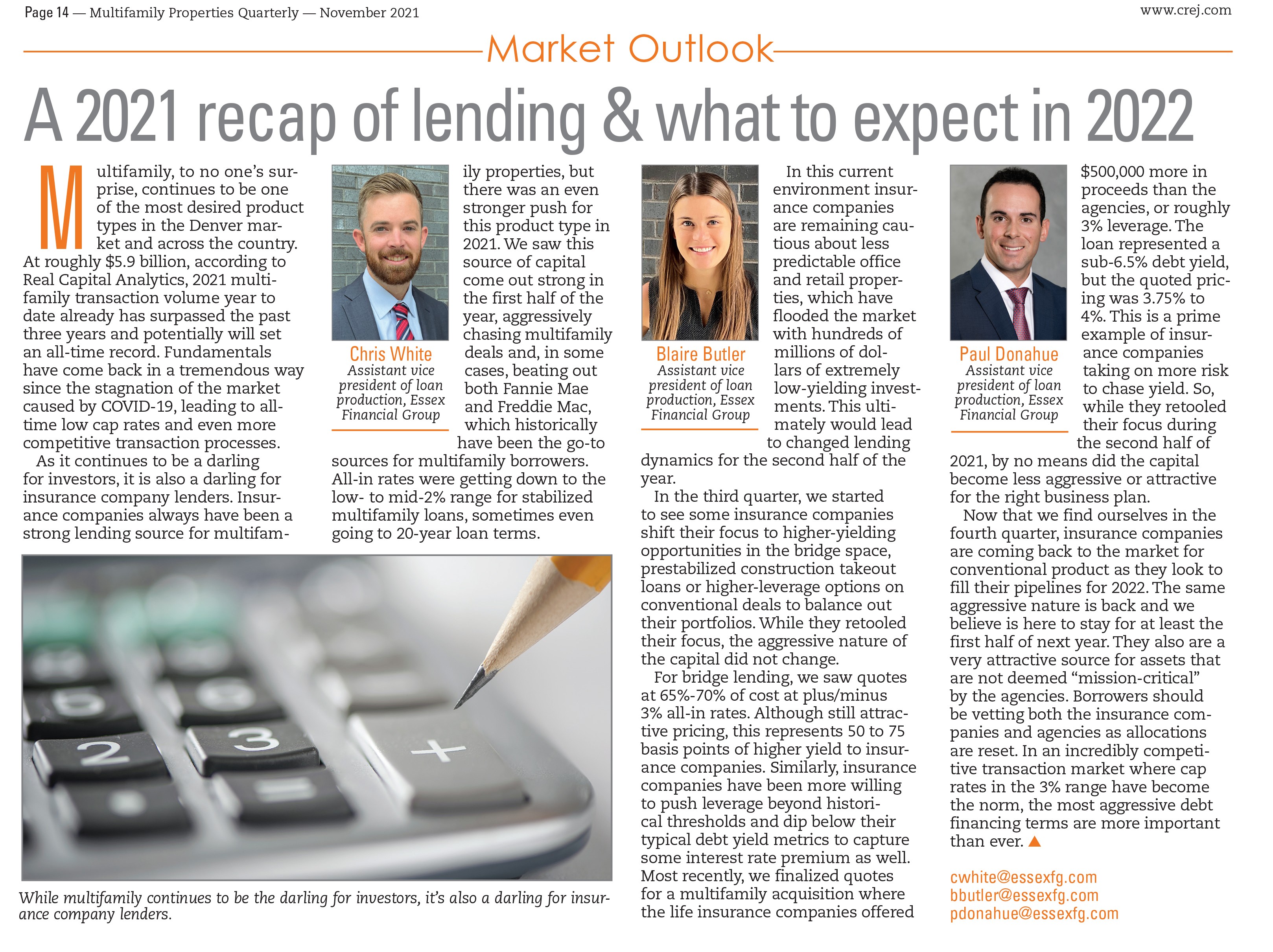Multifamily, to no one’s surprise, continues to be one of the most desired product types in the Denver market and across the country. At roughly $5.9 billion, according to Real Capital Analytics, 2021 multifamily transaction volume year to date already has surpassed the past three years and potentially will set an all-time record. Fundamentals have come back in a tremendous way since the stagnation of the market caused by COVID-19, leading to alltime low cap rates and even more competitive transaction processes.
As it continues to be a darling for investors, it is also a darling for insurance company lenders. Insurance companies always have been a strong lending source for multifamily properties, but there was an even stronger push for this product type in 2021. We saw this source of capital come out strong in the first half of the year, aggressively chasing multifamily deals and, in some cases, beating out both Fannie Mae and Freddie Mac, which historically have been the go-to sources for multifamily borrowers. All-in rates were getting down to the low- to mid-2% range for stabilized multifamily loans, sometimes even going to 20-year loan terms.
In this current environment insurance companies are remaining cautious about less predictable office and retail properties, which have flooded the market with hundreds of millions of dollars of extremely low-yielding investments. This ultimately would lead to changed lending dynamics for the second half of the year.
In the third quarter, we started to see some insurance companies shift their focus to higher-yielding opportunities in the bridge space, prestabilized construction takeout loans or higher-leverage options on conventional deals to balance out their portfolios. While they retooled their focus, the aggressive nature of the capital did not change.
For bridge lending, we saw quotes at 65%-70% of cost at plus/minus 3% all-in rates. Although still attractive pricing, this represents 50 to 75 basis points of higher yield to insurance companies. Similarly, insurance companies have been more willing to push leverage beyond historical thresholds and dip below their typical debt yield metrics to capture some interest rate premium as well. Most recently, we finalized quotes for a multifamily acquisition where the life insurance companies offered $500,000 more in proceeds than the agencies, or roughly 3% leverage. The loan represented a sub-6.5% debt yield, but the quoted pricing was 3.75% to 4%. This is a prime example of insurance companies taking on more risk to chase yield. So, while they retooled their focus during the second half of 2021, by no means did the capital become less aggressive or attractive for the right business plan.
Now that we find ourselves in the fourth quarter, insurance companies are coming back to the market for conventional product as they look to fill their pipelines for 2022. The same aggressive nature is back and we believe is here to stay for at least the first half of next year. They also are a very attractive source for assets that are not deemed “mission-critical” by the agencies. Borrowers should be vetting both the insurance companies and agencies as allocations are reset. In an incredibly competitive transaction market where cap rates in the 3% range have become the norm, the most aggressive debt financing terms are more important than ever.
